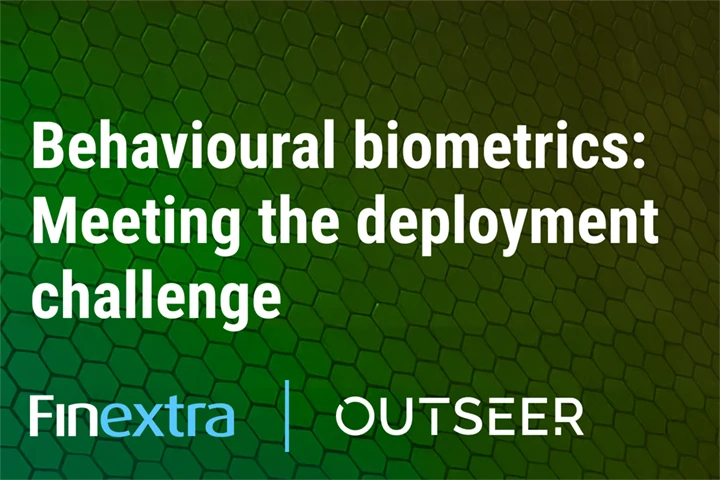Wondering about fraud analytics? We explain what fraud analytics is, how it works to detect and prevent fraud, and its benefits for your organization.
What Is Fraud Analytics?
Fraud analytics refers to the process of leveraging data mining, machine learning, and applied data science to understand, detect, and prevent fraudulent transactions.
Online fraud attacks continue to rise each year and show no signs of slowing down. In Q3 of 2021, Outseer recorded more than 156,000 fraud attacks worldwide—a 30% increase over the same quarter a year earlier. During that same period, attacks involving brand abuse climbed 274%, and the use of rogue mobile apps grew almost 50%.
According to the FBI, U.S. consumers and businesses lost more than $6.9 billion to fraud attacks in 2021—a 66% increase over the previous year. And that’s on top of $7.9 billion in card-not-present (CNP) fraud and $6 billion lost to account takeover (ATO).
Fraud prevention systems rely on fraud analytics to detect the telltale signs of fraud before it can harm businesses or customers. Generally speaking, fraud analytics involves gathering data from a large, high-quality dataset and mining it to establish baseline patterns that can be used to predict and stop future fraud attacks. Analytics tools can also be used to measure performance and finetune controls for continuous improvement.
Here are some of the benefits businesses can expect to see from their fraud analytics.
Benefits of Fraud Analytics
By collecting and processing transactional and user data, businesses can gain deep insight into fraud attempts, insider attacks, and account takeovers. But again, the size and quality of the dataset better. Shared data spanning thousands of companies, sectors, and geographies net the best results. With the power of machine learning and artificial intelligence, automation can immediately take corrective action when these threats are detected.
Reduce Costs
Many organizations choose to partner with a fraud prevention services to help monitor their systems and build threat models to prevent instances of fraud within their businesses. Leveraging services that use artificial intelligence eliminates countless hours of manual research during a fraud investigation.
Fraud analytics allow organizations to be proactive in defeating fraud. By staying ahead of attacks, businesses avoid embarrassing and costly data breaches that jeopardize their customers and intellectual property.
Protect Your Brand
With brand abuse attacks at the forefront of fraud trends, businesses have a lot more to lose than just their revenue. Fraudsters impersonate brands by exploiting their brand identity an consumer trust to trick their prey into handing over payment details.
Brand abuse scams not only steal payment details from their victims, they also quickly tarnish the brands they impersonate. Even when a company has no idea it’s being impersonated, customers often hold that brand accountable for the fraud.
For consumers who fall prey to these impersonations, the average loss is $1,000—though it can get distressingly higher. When it’s a large business that’s victimized, these attacks can lead to an average $5 million in loss. When impersonation attacks lead to a data breach, it costs US-based companies another $9.05 million on average, per incident. And depending on the industry, attendant regulatory fines can run as high as $487,000 or more.
That’s just the start of things. Get impersonated, and your brand could take a hit to reputation and revenue as your customers and prospects grow wary of your legitimate digital marketing campaigns and channels. According to Forrester, lost customer trust and even heightened customer suspicion can impact a company’s revenue by 10% to 25% in a single year.
Cyberattack detection and takedown services leveraging fraud analytics to identify when malicious actors are attempting to impersonate a brand. Spoofed domain names, fake social media accounts, phony brand smartphone apps, and phishing sites can all be detected and removed before they can cause serious financial or reputational harm.
Protect Customers
Even when businesses do everything right, it still might not be enough to stop fraud. Between data breaches and dark web marketplaces, your customers’ stolen data could be beyond your control. Armed with compromised payment details or login credentials, fraudsters can sign on to customer accounts, change security settings, make purchases, view sensitive data, and more.
Before fraud analytics, preventing these attacks wasn’t easy. Many businesses relied solely on security questions or onetime passcodes that are easy for experienced fraudsters to bypass.
Today, artificial intelligence combined with modern data science and shared transaction data can understand the context behind a user login or transaction to separate friend from faux. This is done by collecting metrics such as device ID and geographical location and comparing it to typical user behavior.
Each unusual or suspicious behavior adds to the overall risk score for the login or transaction attempt. Once risk thresholds established by the organization are met, the user can be prompted to authenticate through a challenge flow or block the transaction entirely.
Putting Fraud Analytics into Action
Here are a few tips you can use to collect fraud analytics in your organization:
- Develop a fraud risk assessment program to determine areas of potential fraud.
- Determine your organization’s risk tolerance and prioritize actions accordingly.
- Assign someone to oversee your fraud monitoring system.
- Implement case management measures and reporting mechanisms
- Identify and continuously monitor for evolving indicators of compromise.
For most organizations this is easier said than done, of course. That’s why businesses partner with providers that offer comprehensive, turnkey solutions.
Case in point: Outseer. From our payment fraud and account monitoring solutions to our 24/7 cyberattack detection and takedown services, our fraud analytics expertise enables us to prevent 95% of all fraud loss, with customer intervention rates as low as 5%. That’s the best performance in the industry.
By seeing what others can’t, we help organizations stop fraud long before an account is ever accessed or a transaction is ever processed. To learn how you can protect your customers through the power of market-leading fraud analytics, request a free demo today.












